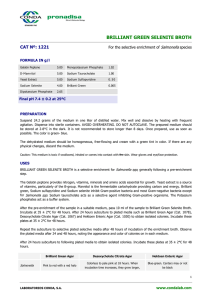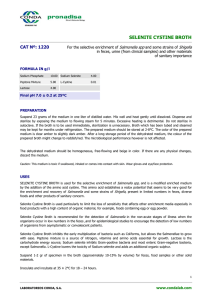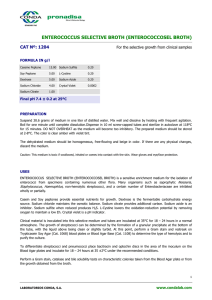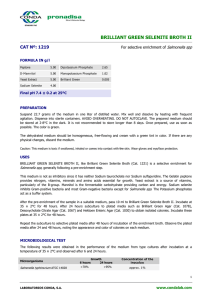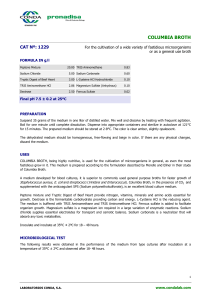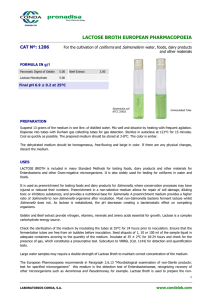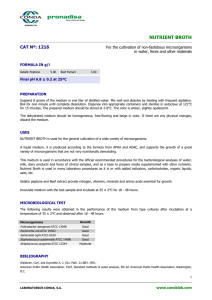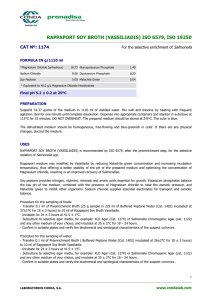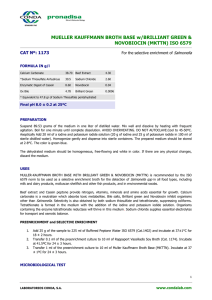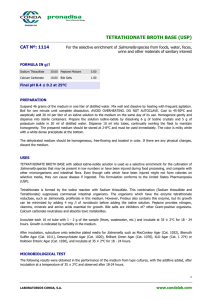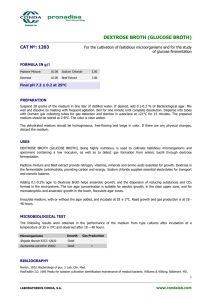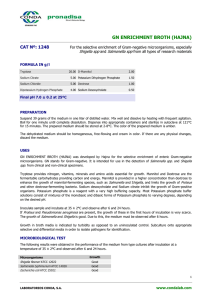SODIUM SELENITE BROTH CAT Nº: 1222 Salmonella spp
advertisement
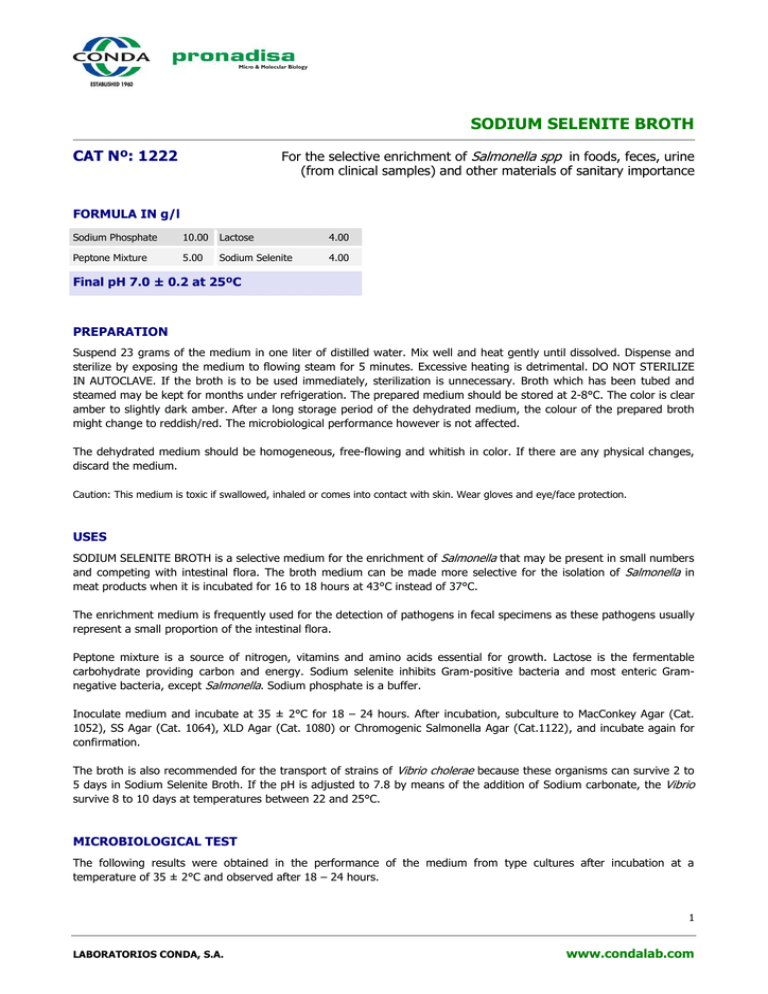
SODIUM SELENITE BROTH CAT Nº: 1222 For the selective enrichment of Salmonella spp in foods, feces, urine (from clinical samples) and other materials of sanitary importance FORMULA IN g/l Sodium Phosphate 10.00 Lactose 4.00 Peptone Mixture 5.00 Sodium Selenite 4.00 Final pH 7.0 ± 0.2 at 25ºC PREPARATION Suspend 23 grams of the medium in one liter of distilled water. Mix well and heat gently until dissolved. Dispense and sterilize by exposing the medium to flowing steam for 5 minutes. Excessive heating is detrimental. DO NOT STERILIZE IN AUTOCLAVE. If the broth is to be used immediately, sterilization is unnecessary. Broth which has been tubed and steamed may be kept for months under refrigeration. The prepared medium should be stored at 2-8°C. The color is clear amber to slightly dark amber. After a long storage period of the dehydrated medium, the colour of the prepared broth might change to reddish/red. The microbiological performance however is not affected. The dehydrated medium should be homogeneous, free-flowing and whitish in color. If there are any physical changes, discard the medium. Caution: This medium is toxic if swallowed, inhaled or comes into contact with skin. Wear gloves and eye/face protection. USES SODIUM SELENITE BROTH is a selective medium for the enrichment of Salmonella that may be present in small numbers and competing with intestinal flora. The broth medium can be made more selective for the isolation of Salmonella in meat products when it is incubated for 16 to 18 hours at 43°C instead of 37°C. The enrichment medium is frequently used for the detection of pathogens in fecal specimens as these pathogens usually represent a small proportion of the intestinal flora. Peptone mixture is a source of nitrogen, vitamins and amino acids essential for growth. Lactose is the fermentable carbohydrate providing carbon and energy. Sodium selenite inhibits Gram-positive bacteria and most enteric Gramnegative bacteria, except Salmonella. Sodium phosphate is a buffer. Inoculate medium and incubate at 35 ± 2°C for 18 – 24 hours. After incubation, subculture to MacConkey Agar (Cat. 1052), SS Agar (Cat. 1064), XLD Agar (Cat. 1080) or Chromogenic Salmonella Agar (Cat.1122), and incubate again for confirmation. The broth is also recommended for the transport of strains of Vibrio cholerae because these organisms can survive 2 to 5 days in Sodium Selenite Broth. If the pH is adjusted to 7.8 by means of the addition of Sodium carbonate, the Vibrio survive 8 to 10 days at temperatures between 22 and 25°C. MICROBIOLOGICAL TEST The following results were obtained in the performance of the medium from type cultures after incubation at a temperature of 35 ± 2°C and observed after 18 – 24 hours. 1 LABORATORIOS CONDA, S.A. www.condalab.com Microorganisms Escherichia coli ATCC 25922 Salmonella choleraesuis ATCC 12011 Salmonella typhi ATCC 6539 Salmonella typhimurium ATCC 14028 Growth Partially inhibited Good Good Good BIBLIOGRAPHY Georgala and Boothroyd J. App. Bact. 28:210. 1965. Harvey and Thompson. Mon. Bull. Ministry Health Lab. Serv. 12:149, 1953. Harvey and Phillips J. Hyg. 59:93. 1961. Felsenfeld, Waters, and Ishihara. Illinois Branch Meeting. Soc. Exper. Biol. and Med., 1950. STORAGE 8ºC Once opened keep powdered medium closed to avoid hydration. 2ºC 2 LABORATORIOS CONDA, S.A. www.condalab.com
